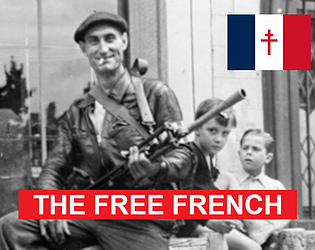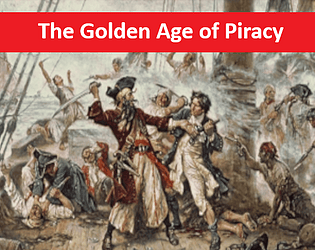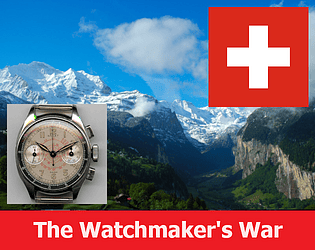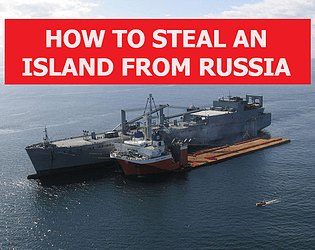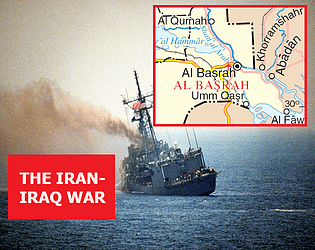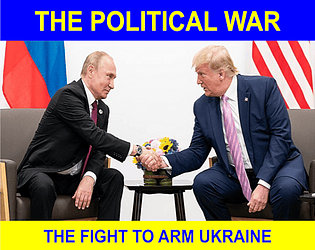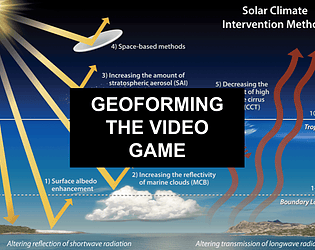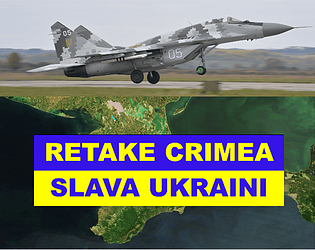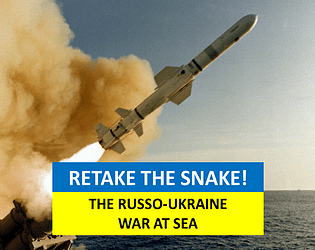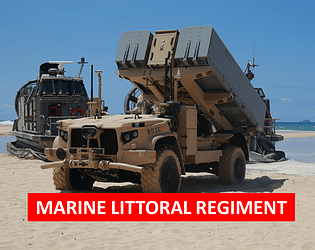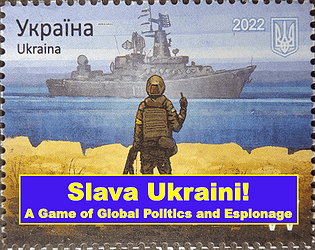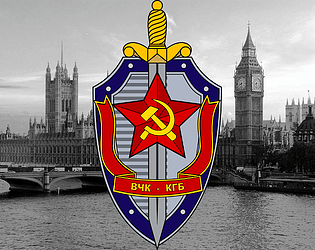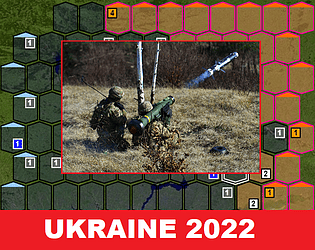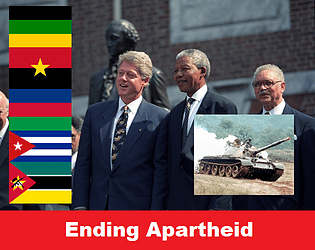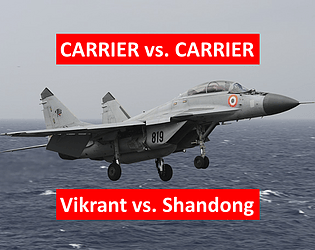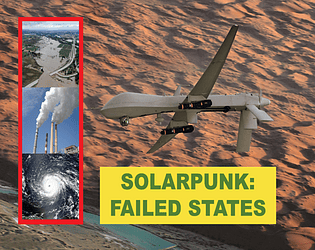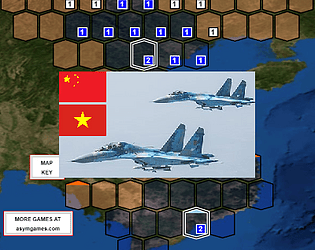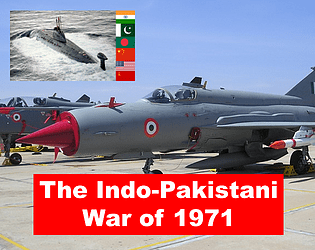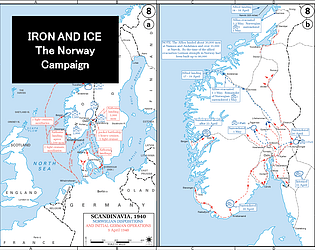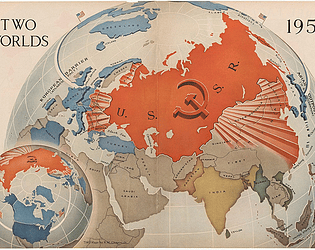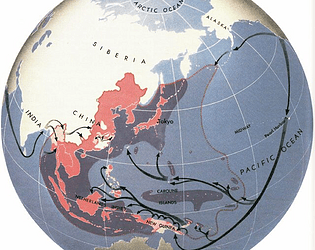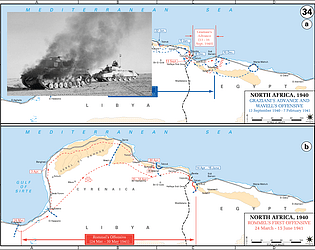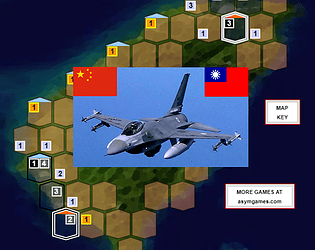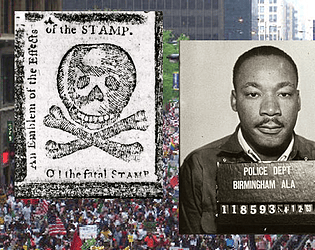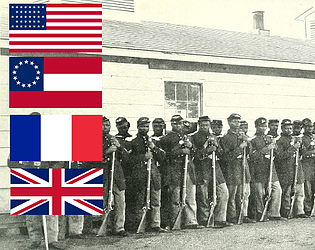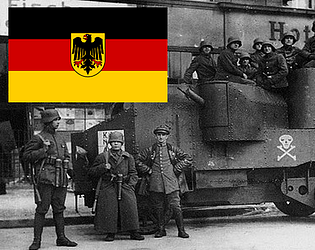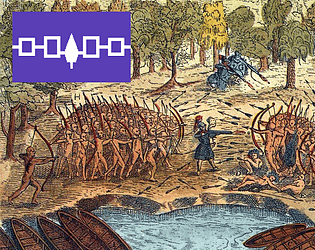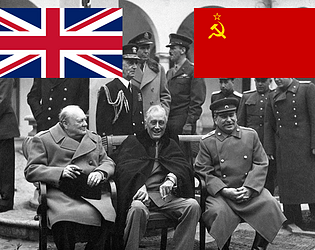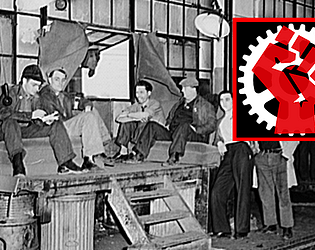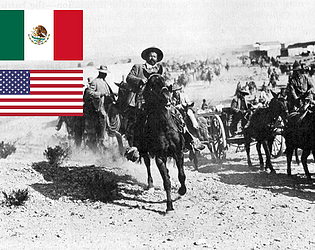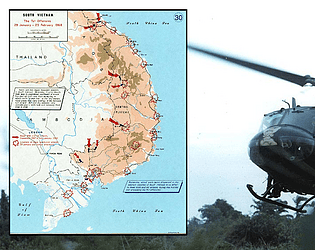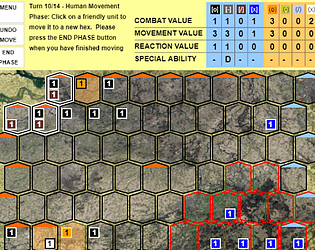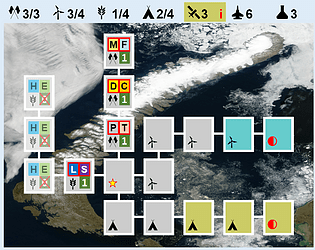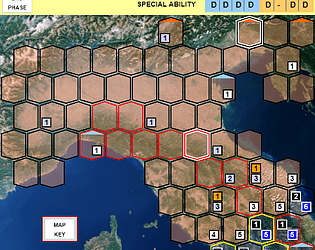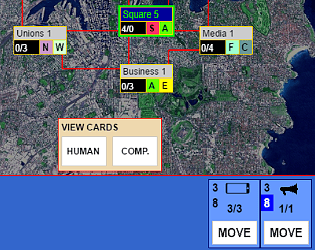No...but you can always try for a higher score!
africacrossgames
Creator of
Recent community posts
Good question. I think the term invade has a more neutral meaning in English than in Chinese. The Allied invasion of Normandy was a very welcome event for most Frenchmen....but we still call it an invasion. The British Invasion of the 1960s was a welcome cultural phenomenon that is fondly remembered in the US. We also use the term invasion in the context of civil wars. Here is a Wikipedia article on the Atlanta Campaign....the article uses the word invaded to describe a military operation, and does not imply that the Confederacy was not part of the United States. An invasion may lead to liberation, reunification, independence, or subjugation. This game does not take a position on what happens after the invasion. It is only intended to explore the mechanics of a military operation.
I hope that helps.
Both of those cards enter your deck on turn 50. You need to find a way to prevent invasion and feed your population until the war turns against Germany. Also, you need to increase your support level to 6 in the Neutral Countries box to stop the Axis Allies. That should buy you enough time to start growing your own food and being able to feed more refugees. The Swiss imported over 50% of their food at the beginning of the war.
Very helpful as always!
This game is really about dealing with an enemy you cannot see, and mitigating the impact of weapons you cannot stop. You can win but expect to lose a lot of ships, UAVs, and habitats. As long as you have enough hexes with habitats connected to the Norwegian electricity grid at the end of the game, you can win a major victory.
One thing to consider is checking the UNITS report on the GAME KEY screen. This should show you how many enemy platforms are left. Your heavy lift ships are being hit by a frigate or sub you cannot detect. Lay enough mines in the right places, and you should be able to destroy all three frigates and two submarines. You still have to stay out of range of the air bases to the south, but the north half of the map will be safe for heavy lift ships.
Drones and cruise missiles are the only things that can destroy your habitats, and they can have unlimited range. These are flying robots, so your mines (undersea robots) cannot really stop them. Actually, nothing in the game can. The one thing you can do is build habitats faster than your opponent can destroy them. The wooden decoys can also help you keep more of your habitats alive.
Whenever an enemy kills one of your units, you get a message box, and you see the weapon card that caused the kill at the bottom of the screen. The weapon card will tell you which platforms can launch the weapon. However, you cannot know which actual enemy unit launched the unit, and you cannot see the unit unless you detect it. This feature adds a bit of realism to the game. The crew of the Moskva probably had no idea of what hit them or what platform launched whatever hit them. Since most of the platforms in this game are robots, you may not even know they have been hit. All you really know is that they stopped transmitting or did not return to base.
I hope that helps.
Hi Adam:
I just played the Unity version.
A) Really awesome game! It is tough to make really complex game mechanics like this fit into a computer game, but you pulled it off. The artwork is also great. All the Cyrillic characters threw me at first, but then I really liked it.
B) When I hit the restart button on the game over screen, I cycle to the intro screen, but then I go right back to the game over screen. I would love to play again, as I did not do very well on my first try :(
Glad you like it!
Scythe looks pretty cool. I think there is an implicit cost to having too many activists in the game if you have gained the ability to pick the next card. Once you have enough workers to activate the cards that reduce CO2, you are going to want to play these CO2 reduction cards frequently. Since you cannot place workers and pick the next card, you have to choose one ,and you are probably going to choose CO2 reduction. Put another way, placing workers has an increasingly high opportunity cost as the game progresses. Similarly, if you already have enough workers placed, you really do not want to waste a turn recruiting new workers when you could reduce CO2 or deploy a solar shade. At some point, it becomes more efficient to remove the Community Organizer card from the deck.
Oh! Got it.
https://africacrossgames.itch.io/retake-crimea is the latest using that engine.
https://africacrossgames.itch.io/the-french-resistance is my favorite
Mostly books, movies, or podcasts. A good period drama generally lays out the basic structure of a conflict: who are the actors, what are the resources that they have at their disposal, etc. Podcasts are good for this as well, especially if we are talking about current events. Then its LOTs of internet research to fill in the details. With a good understanding of economics, figuring out how the various actors and resources fit together generally falls into place. As a rule of thumb, history happens because of changes in economics, technology and/or demographics. However, these changes tend to lead to interesting conflicts and clashes, like the one simulated here. Put another way, the industrial union movement was probably going to do some combination of things that you can do in this game to bring major corporations to the bargaining table. They had been trying to do this for decades, and the high tariffs, political environment, and low immigration rates of the 1930s finally allowed unions to win. Building a game like this is about figuring out how to represent those forces through the actions and decisions that actors on both sides could make.
Wow. 27 is pretty good. We actually created an entirely new card type to allow one to add more turns to the turn total. It is the IMF LOANs card. The central idea behind this game is that time is on Ukraine's side if it wants to stop Russia from capturing more territory....but time may be on Russia's side when it comes to Ukraine recapturing territory. I would say your assessment is correct: the opening phases of the game are the most interesting, and the rest is optimization. I think we were all transfixed by the 40 mile convoy and the siege of Mariupol. Watching Ukraine build an army that can retake and hold territory is a lot less exciting. It is also a lot more expensive. Thanks for playing!
Yup. The closest real-world example that I can think of is the current war in Ukraine. Cotton = natural gas. Ironclads = HIMARS. The domestic politics of Western nations play an outsized role in the conflict. Like Ukraine, the Freedman's Republic would be a nation with a lot of moral authority and support in the West. However, that support might not be enough to ensure statehood in the US, and could complicate peace negotiations with the confederacy. Ukrainians looking to join NATO and the EU would know the feeling.
Yes, I think you have picked up on the constraints the game mechanics impose on winning strategies. You are essentially choosing what to focus on, then figuring out how to avoid losing while you gather the resources needed to accomplish your next goal. Personally, I think the fun part about these games is figuring out what to do first. Put another way, most real world conflicts have an optimal strategy that makes sense given the constraints involved. Maybe the Allies should have landed in Belgium instead of Normandy, but they would need to win the battle of the Atlantic and establish air superiority first. Maybe night bombing works better than day bombing for establishing air superiority, but neither can happen if U-boats are sinking your oil tankers in the North Atlantic - planes need a LOT of gas. So, battle of the Atlantic in 1942, strategic bombing in 1943, and invasion in 1944. I am not sure you could pull off WWII in any other order! But a strategy game is a safe space to try things out.
Anyway, yes, you need a lot of activists in this game. I think figuring out how to build a big supply of people willing to engage in civil disobedience and risk their lives is part of the challenge of the game. I think that has been true of most non-violent movements that seek big changes.
Yup. By the end of the 1980s, the SADF's intervention in the Angolan civil war was becoming a major drain on the South African economy. It was becoming difficult for SA to fight a conventional war far from its borders and maintain control at home. The game attempts to show how this hybrid conflict really helped end Apartheid. At the same time, the fact that the ANC was effectively at war with South Africa, and aligned with communists, probably hurt the ANC's ability to win over moderates in South Africa. You have to strike a balance.
Yup. You kind of saw that in the Donbass in June: Ukraine did not really have the weapons it needed, and it took a while for Ukraine to make the case that it really needed thinks like HIMARS.
The meta point of this game is that Ukraine should really be self sufficient in key weapon systems like long-range rockets and missiles. Building 300 km precision rockets is not rocket science....and Ukraine has a lot of rocket rocket scientists.
Old school table top war games :)
If you are looking for a good computer game that accurately simulates modern naval combat, Harpoon is probably your best bet. There may be newer and better alternatives out there. Harpoon is a real time strategy game, which is probably the best way to really understand naval warfare. I do not really know of any turn-based, hex-based naval combat video games. This is sort of why we built this game engine. The great thing about Harpoon was the hyper realistic sensor models for things like radar, sonar, and electronic intelligence. We have tried to do a bit of that here, but in a turn based / hex based game engine.
Of course, there are lots of really good hex based/turn based modern naval warfare board games out there. One issue with board games is that you cannot really do a lot with sensors. This is where video games have the edge.
Trying to have the best of both worlds.
Thanks for the feed back. Incredibly helpful as always.
You are right, there are a LOT of things to keep track of in this game. Visualizing sensor ranges and probabilities has been a constant challenge throughout the development process. The newest version of this game has a few tweaks that should help a bit. Enemy weapons cards now show up 100% of the time, so you can get a better sense of enemy capabilities. There is now also a box that gives you the detection probability for each hex. Just click on the hex, and you will see the probability of detection for each unit.
Hopefully, these changes reduce the learning curve a bit. At the end of the day, modern naval combat is complicated.
Thanks for playing.
Well, it was really the Cubans who defeated the SADF in Angola with the help of US oil companies. Cuban and Angolan forces defeated the SADF at the battle of Quito Cuanavale, which is also called the Stalingrad of Africa. The Angolan Civil War deserves its own game. Anyway, this was in 1988 and secret talks between the ANC and the South African government were fairly far along. The arms embargo was also starting to hurt the SADF's combat effectiveness, especially in the air where the South African Airforce had lost air superiority to Cuban MiG 21s. Strikes and civil unrest back in South Africa also tied down South African troops that could have intervened in various border conflicts. Basically, the SADF ran out of money, men, and equipment. After Quito Cuanavale, South Africa's government decided to start pulling out of Angola and Namibia.
Could the SADF have invaded neighboring countries after this point? In theory, yes. The SADF remained a highly effective and professional force. However, South African society was tired of decades of war by this point.
At the end of the day, Mandela pulled off nifty trick: in ending Apartheid and the border wars, he made South Africa the economic capital of Southern Africa. South African businessmen ranged across the continent setting up mining ventures just in time to sell minerals to an emerging China. South Africa also became an important force in ending devastating conflicts such as the two Congolese civil wars. A desegregated SANDF often forms the backbone of peace keeping missions across the continent (civil war is bad for business). Today, south African troops can be found as far afield as Sudan.
Cuba won the battle, South Africa won the future.
Thanks for playing!
I was really trying to make deck building front and center in this game. If you start aggressively modifying the deck by adding and removing cards, you can start to score 30+ points. If you can get the High Level Mole card to pop up every other turn, you start to score lots of points. You can also get more points for your agents in VP boxes by adding cards to your deck that increase the VP value of the boxes themselves. To get there, you do have to solve some defensive issues first.
Anyway, you ask a great question: what is at stake? Apparently, not much. All these high level moles within the British government do not seem to have provided Moscow with much of value over the years. The UK remained a stalwart member of NATO. The Cambridge Five are, however, a continuing source of inspiration for BBC period costume dramas. The more spies you plant, the more prestige drama you get!
I am trying to make the video game equivalent of a 90 min. period drama movie. you can't cram much exposition into an hour an a half, and also tell a compelling story. I think the same is basically true of video games. If a director does his or her job right, the movie will make you want to look up the characters on Wikipedia. If some plays my game and then decides to lean more about A. Philip Randolph, I will be very happy :)
We tend to think that there was a certain amount of inevitability to the end of white rule in South Africa. However, there were LOTS of things working against the ANC. For instance, if the Rwandan genocide and the civil wars in the Congo had happened earlier in the 1990s, I am not sure white South Africans would have agreed to free, multi racial elections. There was also a real possibility that South Africa would break up into several states due to the huge diversity within South Africa. Despite all this, Nelson Mandel got the job done, and South Africa is a unified, democratic country.
Thanks for playing!
Yeah, it is tough to strike a balance with the insurgencies in this game. When building this, I assumed that insurgency would also include non-violent acts of civil disobedience that could really disrupt Russian supply lines. I envisioned demonstrators blockading roads and camping out on run ways. Russia would have a tough time breaking up these kinds of demonstrations without resorting to violence. Supplies are not getting through AND you have to send lots of troops to arrest demonstrators.


